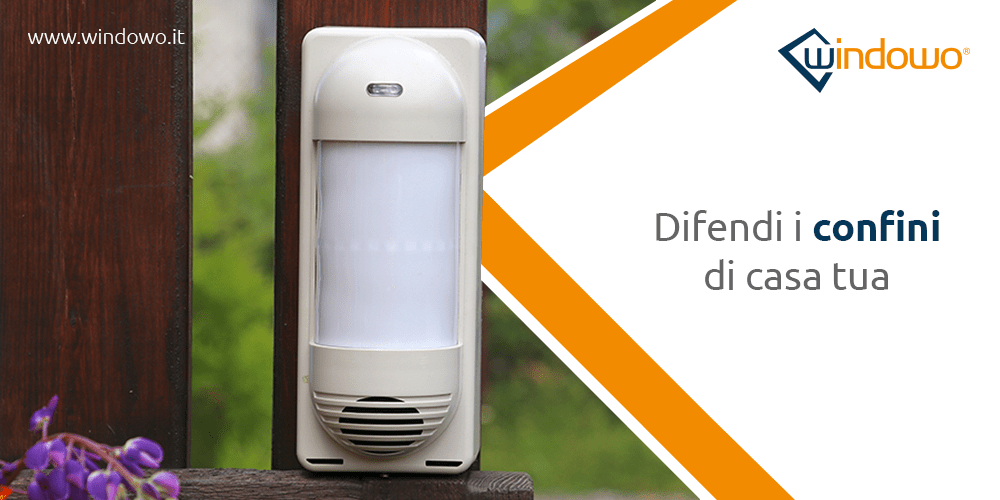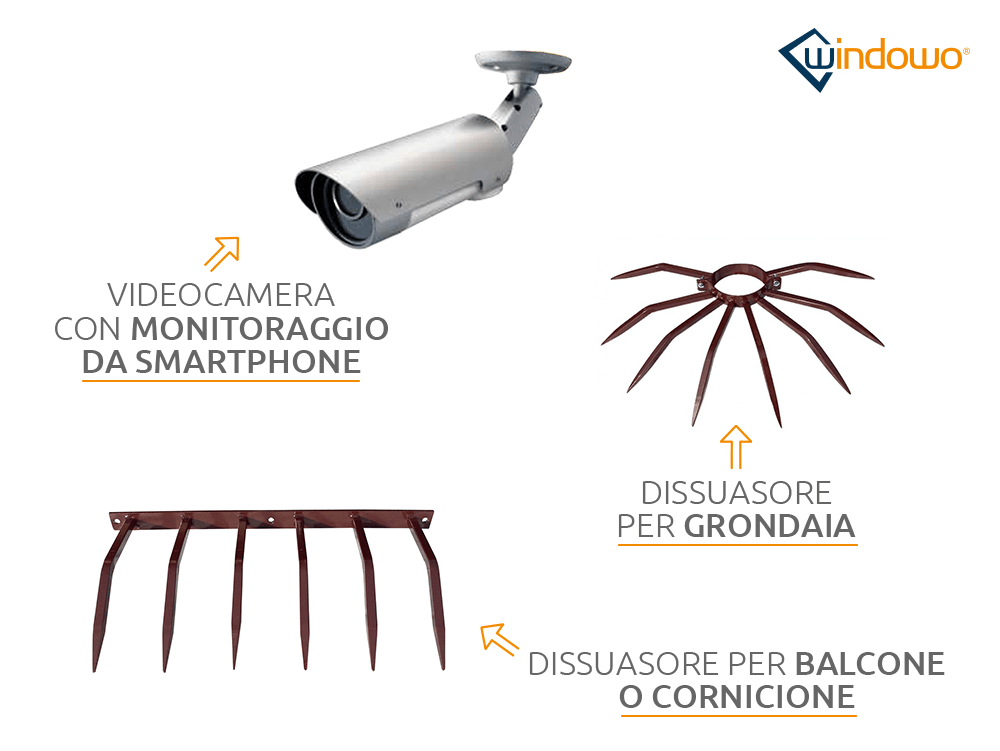Do you want to install an external perimeter alarm? In this guide you will find different types of sensors. In addition, we will talk about other anti-burglary security systems to install outside the home.

Internal
home burglar alarms alarms scare away intruders. Yes, but wouldn't it be better to scare them away before they cross the threshold of your home (even if it is protected by
burglar bars )?
Here's what an external perimeter alarm is for. There are many doubts on this topic, so I thought a good in-depth analysis could be useful. In this article:
- we will review various types of perimeter sensors and try to understand how they work;
- I will try to answer some frequently asked questions ;
- I will tell you about other outdoor intrusion systems that can join the sensors in the “anti-thief mission”.

3 types of perimeter sensors
There are so many types of perimeter sensors. I don't want to confuse you by talking about a thousand models, I want to help you clarify, so I have selected three categories in particular: infrared, microwave and buried sensors.
Infrared and microwave perimeter barriers
Under the umbrella of external perimeter barriers are:
- sensors that use infrared technology (technically they are called PIR sensors or even double PIR) and detect intruders through their body temperature. There are both curtain perimeter sensors and rod barriers: with “curtain” and “rod” we mean, so to speak, the shape of the infrared rays;
- microwave sensors that use high-frequency waves – I won't explain the dynamics to you to avoid being too technical – to detect the presence of the intruder.
These systems
are usually installed on doors, windows, balconies, terraces but can also be positioned along the perimeter of the property, for example on gates and fences.
What is meant by “dual or triple technology perimeter barriers”?
When it comes to anti-theft systems, you hear all sorts of things: dual, triple, quadruple technology sensors... As if we were the secret services! In reality, these are simply products that integrate both infrared and microwave systems and that only sound the alarm when all the technologies involved detect the presence of an intruder. In this way, it is possible to limit false alarms .
Many, however, wonder if this advantage is not followed by the disadvantage of reducing the effectiveness of the system: what happens if, for example, the thief covers the sensor with an object sabotaging the infrared system? Well, the most advanced sensors have the anti-masking function : to put it briefly, after a certain number of detections of an unwelcome presence they activate the alarm even if only the microwave system is working.
What I recommend you do to choose the best solution for you is
to ask for the intervention of an installer : a professional will certainly be able to best evaluate all the factors and recommend the perimeter protection system that is right for you. Maybe he could suggest you use the third type of sensors that I am about to tell you about...
The buried perimeter sensors
A separate category is made up of buried cable intrusion systems. How do they work? They are equipped with sensors that detect the
pressure exerted by our “dear” thieves as they pass by or
variations in the electromagnetic field . The main advantage of this solution? Intruders cannot sabotage it. With this system you will take them by surprise and they will run away!
How to manage a perimeter alarm if you have a dog?
Pets are not compatible with alarms, as we know. I'll tell you right away that there is no solution that will free you 100% from the problem of false alarms, but you can try to reduce it by choosing a "pet immune" perimeter alarm system . In fact, there are types of perimeter sensors that can be adjusted so that the alarm does not go off below a certain threshold of weight, height or temperature of the intruder. This way Fido can run around the garden without problems.
Other outdoor intrusion systems

Well, now we know enough about perimeter sensors to be prepared for the choice. However, if you want alternatives to this type of system or, even better, complementary elements, you can evaluate at least two other solutions: surveillance cameras and deterrents. Let's look at them more closely.
Surveillance cameras (choose the most technological)
There are a myriad of outdoor surveillance cameras on the market. I recommend choosing cameras that allow you to
monitor the outdoors remotely through your smartphone . Here on Windowo you can find
Opera outdoor cameras , which allow you to detect images and sounds with an app to download on your phone. Think that through the app you can also record and photograph the images.
Oh, and if you have pets, the remote control video surveillance system will also help you check if the alarm was triggered by your four-legged friend.
Gutter and Balcony Deterrents: Thief, You'd Better Turn Back!
Even the most determined thieves give up when faced with the risk of getting hurt: this is the message you send them through
deterrents . There are both models to install on gutters and models for balconies and cornices.
Ok. I think we've learned quite a bit at this point to make your home a burglar-proof stronghold. All that's left to do is get to work!
PS In the Solutions section of the Windowo online store you will find all our solutions for the
anti-burglary security of doors and windows , an area dedicated to
security grates and grilles and another which collects all the
access control systems.






